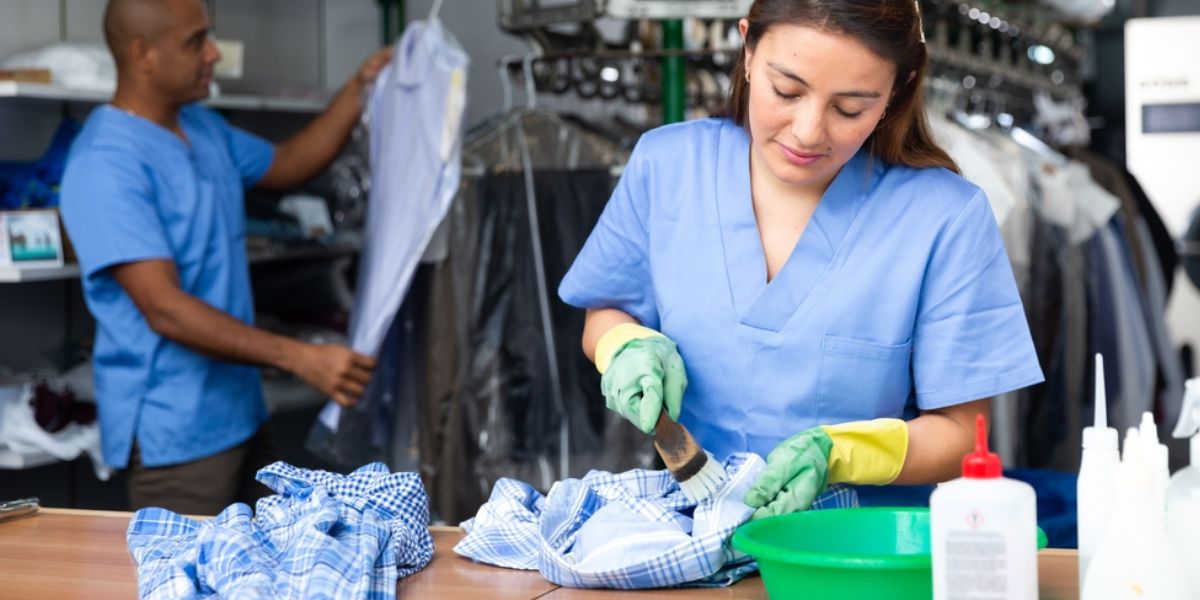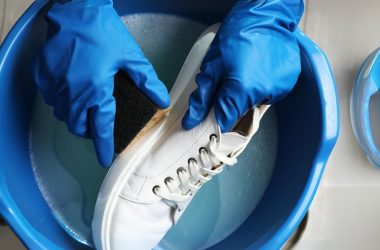Dry Cleaning Process for Clothes: Step-by-Step Explained
Dry cleaning is a specialised cleaning method designed for clothes that cannot withstand the rigours of a traditional water-based wash. It uses chemical solvents instead of water, making it ideal for delicate fabrics, structured clothing, and items with detailed ornaments.
Many people rely on dry cleaning for formalwear, suits, woollens, and silk garments to maintain their appearance and prolong their lifespan. Suppose you’ve ever wondered what happens after you drop off your clothes at a professional laundry. In that case, this article walks you through the entire dry cleaning process from inspection to final packaging.
Breaking Down the Dry Cleaning Process
Dry cleaning might seem like a simple drop-and-collect service, but behind the scenes, it involves a careful and organised process. From stain removal to professional finishing, each stage is designed to clean your garments thoroughly while preserving their quality. Here’s a closer look at how dry cleaning works and what happens to your clothes after you hand them over.
Step 1: Garment Tagging and Inspection
The process begins the moment you hand over your garments at the counter. Each item is tagged with a unique identifier to ensure nothing gets misplaced or confused. This is usually a small paper tag or barcode attached discreetly to the garment.
Once tagged, the garment goes through an initial inspection. Trained staff check for stains, tears, fabric type, and any existing damage. This helps them decide how best to treat each item, especially if it requires extra attention or light handling. Items are also grouped based on colour and fabric to prevent any cross-contamination during cleaning.
Step 2: Pre-Spotting and Stain Treatment
Before garments are placed in the cleaning machine, visible stains are treated by hand. This process, known as pre-spotting, is one of the most important steps in ensuring a garment comes out clean.
Different types of stains require different treatments. Oil-based stains like grease or makeup, tannin stains like coffee or wine, and stains like blood or sweat, each respond to specific solvents and techniques. Professional laundry services use spotting boards, steam, and mild chemicals to treat the stain without harming the fabric. Pre-spotting ensures that stains are removed before the main cleaning cycle begins, improving the overall results.

Step 3: The Dry Cleaning Machine Cycle
After pre-treatment, the garments are loaded into a specialised dry cleaning machine. This machine looks similar to a front-loading washing machine but functions very differently. Instead of water and detergent, it uses a chemical solvent, traditionally perchloroethylene (also known as perc), though many cleaners now use hydrocarbon or silicone-based alternatives.
Inside the Machine
- Clothes are loaded into a rotating drum.
- A chemical solvent is introduced.
- The solvent gently cleans garments while the drum rotates, lifting soil, sweat, and oils.
- The system filters and recirculates the solvent continuously, removing impurities during the wash cycle.
- This stage typically lasts 8 to 30 minutes, depending on the material and soil level.
Step 4: Solvent Extraction and Drying
Once the cleaning cycle is complete, the machine begins drying the clothes. Unlike home laundry systems that require a separate drying appliance, the dry cleaning machine itself performs this step.
The solvent is extracted from the garments, and a gentle heat is applied inside the drum. This evaporates any remaining traces of the cleaning solvent. The vapour is then captured, reduced, and purified for reuse in future cycles.
This drying method is carefully monitored to avoid damaging soft fabrics. It helps maintain the structure of garments, especially those with padding, linings, or embroidery.
Step 5: Post-Spotting
Once dry, each garment is inspected again to ensure all stains were removed during the cleaning cycle. If any marks remain, the cleaner will manually treat those areas with specialised spotting techniques.
This step may involve:
- Steam or air blowers
- Spot cleaning agents
- Neutralising chemicals
Post-spotting is a final quality control measure that ensures the garment meets the expected standard before it is returned to the customer.

Step 6: Pressing and Finishing
After cleaning and stain removal, garments often require reshaping and wrinkle removal. This is where pressing and finishing come in.
Depending on the garment, the cleaner may use:
- Steam presses for trousers, pleated skirts, and blouses
- Hand irons for precision areas like shirt collars or cuffs
- Form finishers for structured garments like jackets or coats
Finishing gives the garment its original look and feel. The goal is to ensure it’s not only clean but also looks as good as new or even better.
Step 7: Final Inspection and Packaging
Before handing your garments back, the dry cleaner performs one last inspection. This ensures the garment is clean, well-pressed, and free of any stains or odours.
Once approved, each item is carefully packaged to maintain its freshly cleaned condition. Most garments are turned on hangers and covered with a breathable plastic or garment bag to protect them from dust, moisture, and wrinkles during transport.
Sustainable and Eco-Friendly Practices
As awareness of environmental impact grows, our dry cleaning services in Dubai use more eco-conscious solvents and cleaning methods. Alternatives to traditional solvents, such as liquid CO₂, silicone-based solutions, and hydrocarbon cleaners, are now widely used.
These newer methods are:
- Non-toxic and biodegradable
- Gentler on delicate fabrics
- Safer for staff and customers
If you’re conscious about sustainability, it’s worth asking your local cleaner what kind of solvents and systems they use.
Experience the Difference with Expert Garment Care
Understanding the dry cleaning process gives you better insight into how your clothes are treated and why it’s the preferred method for caring for certain types of garments. From detailed inspections and stain removal to solvent-based cleaning and expert finishing, every step is designed to clean and protect your clothing with precision.
If you’re looking for a reliable Dubai laundry service that handles your garments with care, expertise, and precision, consider booking with Laundry AE. Whether it’s your business suit, evening dress, or winter coat, entrusting your clothes to experienced professionals can make all the difference in their look and longevity.







